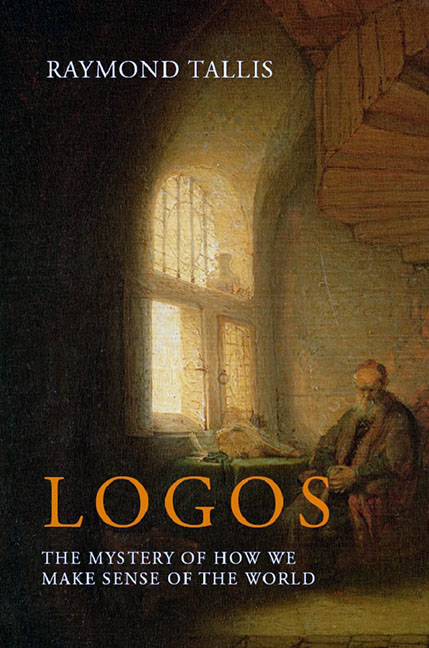Book contents
- Frontmatter
- Dedication
- Contents
- Acknowledgements
- Preface
- Overture
- 1 Seeing the sense-making animal
- 2 Logos: a brief backward glance
- 3 Deflating the mystery 1: putting the world inside the mind
- 4 Deflating the mystery 2: logos as bio-logos
- 5 The escape from subjectivity
- 6 Thatter: knowledge
- 7 Senselessness at the heart of sense
- 8 Towards a complete comprehension of the world?
- Coda
- Notes
- References
- Index
1 - Seeing the sense-making animal
Published online by Cambridge University Press: 09 August 2023
- Frontmatter
- Dedication
- Contents
- Acknowledgements
- Preface
- Overture
- 1 Seeing the sense-making animal
- 2 Logos: a brief backward glance
- 3 Deflating the mystery 1: putting the world inside the mind
- 4 Deflating the mystery 2: logos as bio-logos
- 5 The escape from subjectivity
- 6 Thatter: knowledge
- 7 Senselessness at the heart of sense
- 8 Towards a complete comprehension of the world?
- Coda
- Notes
- References
- Index
Summary
In what follows, I will trace a path from everyday observations which may generate or solve local puzzles, transitions from events that are clues to other events, against the background of already-made sense, to scientific sense, in a naive way that would make philosophers of science and historians of human cognition reach for the smelling salts. My primary aim is to make the richness, the complexity, and the multi-dimensionality of human sense-making more visible. There is no intention to retrace the actual path that humanity and individual human beings have taken in progressing from pre-scientific gawping (and reacting) to a scientific world-picture whose success may be measured in part by the extent to which it has marginalized the natural world in favour of a landscape of technologies. Nor will I give an adequate account of the collective cognitive journey from seeing patterns to seeking them by means of reliable methodologies. My aim is merely the more modest one of highlighting the scale of the long and winding intellectual journey to our present mode of comprehending the world in which we live, that Einstein celebrated. We shall be dipping our toes in deep and muddy waters.
When we try to take the measure of the extraordinary fact that we make (partial) sense of the world, we run into a thicket of connected and overlapping terms: “understanding”, “explaining”, “figuring out”, “grasping and solving”, “recognizing”, “interpreting”, “classifying”, “generalizing”, “detecting patterns”, “seeing order”, “observing structures”; various modes of a “because” that invokes causes, reasons, and other ways of registering intuitions of necessity; noting connections, observing law-like behaviour, uncovering fundamental reality (or realities) or general truths. This is just some of the foliage in the lexical shrubbery. Any exploration of the “sense-making” animal seems obliged, however, to begin with sense experience.
There are many reasons for thinking of the deliverances of our senses as “the ground floor” of our awareness, the platform of all cognitive ascent, the basic stuff out of which sense must be made. Admittedly, almost from the beginning, there is a shaping of experience into a structured world, a nexus of significance. World-building, and learning how to be in the world, are products of an iteration between sense experience and sense-making.
- Type
- Chapter
- Information
- LogosThe Mystery of How We Make Sense of the World, pp. 7 - 30Publisher: Agenda PublishingPrint publication year: 2018



